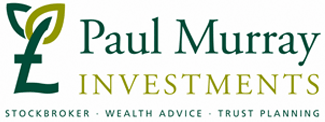Reducing the taxman’s take
To minimise the tax you pay, it’s important to be fully aware of the choices you can make before you make them, so planning ahead and taking professional financial advice is essential. With real-terms tax increases the prospect for the foreseeable future, it makes sense to utilise every available tax relief.
HM Revenue & Customs (HMRC) creates many legitimate opportunities for you to reduce the amount of tax you pay. However, you may not be aware of them all, or you may be unsure of how to take advantage of them.
Here are examples of the ways in which legitimate planning may save you money by reducing your tax bills.
Do you have the correct PAYE tax code?
PAYE tax codes can be incorrect when issued. HMRC may have included an estimate of your unearned income, which means you will pay tax on that income earlier than you would if it was assessed through your self-assessment tax return. You can ask HMRC to remove this estimated income and also correct any other errors.
Could you use the new transferable amount of personal allowance?
In tax year 2015/16, married couples and registered civil partners can share some of their personal allowance between them. The unused allowance of one partner can be used by the other, meaning an overall tax saving for the couple. The amount you can transfer is capped at £1,060 for tax year 2015/16 (10% of the personal allowance), and a transfer is not permitted if either partner is a higher or additional rate taxpayer.
Are you overpaying National Insurance contributions (NICs)?
If you have more than one job, you may overpay NICs during the tax year. You can then reclaim any overpaid NICs from HMRC after the end of the tax year. However, you could prevent the overpayment in the first place by deferring payment of NICs on one of your jobs by sending HMRC a completed form CA72A.
Do you and your new spouse both own separate properties?
If you are getting married or entering into a civil partnership, and you both own separate properties which you continue to occupy for some periods, you need to nominate one of them as your main home within two years of your marriage or registered civil partnership. Once married, you can have only one main home between you for tax purposes. So nominate the one that is likely to make the best use of your Capital Gains Tax (CGT) property exemption, otherwise HMRC will designate the property that you occupy the most as your main residence.
If you own more than one residential property, have you informed HMRC which of your properties should be treated as your main home for tax purposes?
The property that has always been your main home is free of CGT. Any other property where you have lived for part of the time will attract a tax exemption for the periods you have lived there and have elected for it to be your main home. If a property has been your nominated main home at any time, the gain for the last 18 months of ownership (36 months if moving into care) is free of tax, even if you do not live there during that final period. The position may become even more complicated if you have an overseas property.
Are you paying an extra Child Benefit tax charge?
Child Benefit still continues to be paid to everyone, but if you’re a higher-income family, you’ll have to pay extra tax if you choose to keep getting it. If your income lies between £50,000 and £60,000, the Child Benefit tax charge will be equivalent to 1% of the child benefit for every £100 of income over £50,000. The tax charge applies to the higher earner, irrespective of who claims the benefit. To avoid the tax charge, you could either stop claiming Child Benefit or reduce your income below £50,000. If your income is over £60,000 a year, you will be subject to a tax charge to claw back the full amount of the benefit.




